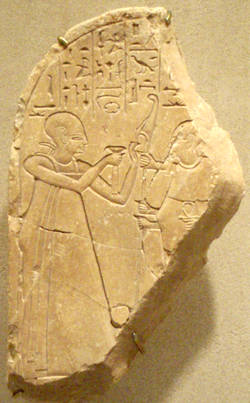- Part of a wooden door frame showing the vizier Neferrenpet; 19th Dynasty of Ancient Egypt, Egyptian Museum in Turin
- The Book of the Dead of Neferrenpet, ca. 1295-1185 B.C.E.,.35.1448 Brooklyn Museum
This article may require cleanup to meet Wikipedia's quality standards. The specific problem is: Identity and family history of subject is unclear due to inaccessible reference citations.(October 2025) |
| Neferronpet | |||||
|---|---|---|---|---|---|
| Vizier of the South, High Priest of Ptah in Memphis | |||||
 Neferronpet before Ptah | |||||
| Egyptian name | |||||
| Predecessor | Khay as Vizier and possibly Khaemwaset as High Priest of Ptah? | ||||
| Dynasty | 19th Dynasty | ||||
| Pharaoh | Ramesses II, Merenptah, Amenmesse, Seti II | ||||
| Burial | Saqqara (alleged) | ||||
| Spouse | Mutpipu | ||||
| Father | Ptahemakhet | ||||
| Children |
| ||||
Neferronpet, or Neferrenpet, was a Vizier and High Priest of Ptah from the reign of Ramesses II into the reign of Seti II.

